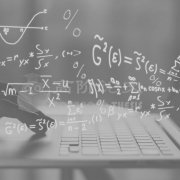美国代写:三级跳运动员
美国代写:三级跳运动员
需求分析是根据具体的运动情况确定运动员在体育训练方面的需求或要求的过程。基于运动的需要:跳远运动是跳远运动员需要了解项目的感觉和节奏的运动。三级跳远运动从一个环节流向另一个环节。因此,三级跳远运动员应充分了解该项运动的全部动作顺序。跳远运动员在进行个人动作时,必须有极强的动觉意识。基于个人的需要:所讨论的个人没有任何残疾,也不是久坐不动的。对“生物力学载荷力”的研究表明,在两种应力作用下,跳高运动员的脚后跟和前脚都会受到冲击。应力主要由地面反力和二次峰值压力引起。三级跳的长度也会影响运动员前脚的平面压力。对个体的神经肌肉系统提出了很高的要求。在实际活动之前和活动期间,人的神经肌肉系统会受到高范围的激活的影响,然后由于跳跃而产生偏心活动。
美国代写:三级跳运动员
参与这种高活动的肌肉是股外侧肌,臀部的伸肌和腓肠肌。运动有助于降低起飞时受伤的风险(Perttunen等,2000)。根据案例研究,三级跳运动员已经进行了一段时间的基本速度和跳跃训练。这些训练帮助他们提高跳跃,步和跳的爆发力。然而,跳高者想要在力量和灵活性上有更大的提高。测试的目的是评估三级跳运动员的综合实力和弱点。测试将有助于预测运动员的表现。通过这种方式,三级跳运动员可以得到不断的反馈,知道他需要在哪些地方提高力量和灵活性(Freeman, 2015)。表1列出了三个评估测试。一般来说,30米跑是检查运动员速度的必要项目。SJ主要检查速度和柔韧性,而STJ是这个运动员的合适测试。
美国代写:三级跳运动员
Needs analysis is the process of identifying what are the needs or requirements in terms of physical training for an athlete with respect to a specific sport situation.Need based on Sport: The sport of the triple jump is one where the triple jumper needs to understand the feel and rhythm of the event. The triple jump sport flows from one segment to another segment. Therefore, the triple jumper should fully understand the whole part sequence of the sport. The triple jumper must have extreme kinesthetic awareness even as they execute individual motions.Need based on Individual: The individual in question does not have any disability and is not sedentary. Studies on ‘biomechanical loading forces’ indicate that heel and forefoot of the jumper would suffer impact based on two kinds of stresses. Primarily the stress would be caused by ground reaction forces and secondary peak pressures. Triple jump length would also impact on the planar pressure of the athlete’s forefoot. Great demands are placed on the neuromuscular system of the individual. Before the actual activity and during the activity the person’s neuromuscular system would be impacted with a high range of activation and then eccentric activity because of the jump.
美国代写:三级跳运动员
The muscles that would be involved in this high activity are vastus lateralis, the extensor muscles of the hip and the gastrocnemius. Exercise will help lower the risk of injury during takeoff (Perttunen, et al, 2000). As per the case study, the triple jumper has been training for some time now with basic speed and jumping drills. These drills help them improve on explosive power in hop, step and jump. However, the jumper wants to improve more on power and flexibility. The purpose of testing is to evaluate the overall strength and weaknesses of the triple jumper. The testing will help in predicting the performance of the athlete. This way the triple jumper can be given constant feedback on where he needs to improve power and flexibility (Freeman, 2015). Three assessment tests are presented in Table 1. The 30m run is necessary to check for the speed of the athlete in general. The SJ will mainly check for speed and flexibility, while the STJ is the proper test for this athlete.








